By Shayla Blatchford On a day like this, just near the halfway mark of the legislative session, there is never a dull moment at the State Capitol (Roundhouse) in Santa Fe, NM. The happenings range from union workers taking a stand and confronting their senators outside the Chamber House doors, to the continuous inside jokes that run through the mailroom during the dispersing of bills. In addition to the constant waves of people flowing from one committee hearing to the next, the Roundhouse has also made time to celebrate its culture and history later this afternoon. It may seem like a stiff environment when looking in from the outside, but once you get to know how accessible everyone is, especially within the senate, you begin to realize how you can truly be heard as an individual. The ties and suits may seem a little intimidating at first, but those who work within the Capital are just doing their jobs like the rest of us—except some of them are doing it for close to nothing. Per diems, for some, don’t always cover the cost of lunch and just to give you an idea, you can buy the cheapest B.L.T. in Santa Fe at the Roundhouse for close to $2.50. In addition to paying for a hotel for up to two months and getting by on a few dollars for meals, the hours are long and there are no breaks. Outside the double doors, it’s hard not to notice the group of men in their cowboy hats, boots and belt buckles and you start to wonder who these men are. They’re not in suits sitting behind a desk reviewing bills or taking a breather in the exclusive lounge located behind the Chamber House doors. They look...
NMSA Theater
posted by Amanda Tyler
It is opening night, the house is open, and the set is not even finished. The director is exasperated. His stage manager informs him that the set was not finished because they “ran out of money.” “You finally get used to one way of doing things and they up and change all of the rules on you,” he exclaims. His writer, who is pacing the stage with loud nervous high-heeled clicks, turns on him. “There are no rules in art!” she shrieks, sounding half-insulted and half-horrified. The two are interrupted by their stage manager, who is trying to delicately remove them from the stage so that their play can commence. “There shouldn’t be,” she says, “but those days are past.” She shoos them off stage, the house lights dim, and the play within the play Gun Shy is finally allowed to begin. Gun Shy is a comedy written and directed by Joey Chavez, and performed by high school theater students at the Santa Fe charter school New Mexico School for the Arts. The play breaks the third wall and brings up questions about what constitutes art, and what is or isn’t allowable in art, over and over again. The answers to these questions, however, are perhaps more apparent in the people behind the play than the script itself. Before their performance, the cast paced, stretched, and applied last minute make-up or costume touch-ups while practicing a few last line-throughs—reciting their lines in order without blocking or acting through the entire play. Their director and teacher Joey Chavez entered the room intermittently and watched them intently, without interrupting the focus coursing through his students. Cris Lannucci, an NMSA senior who plays the author of the play within the play, is eager to sit for an interview,...
The Art of Homes
posted by Nick Martinez
By Nick Martinez/ Photos by Luke Montavon Last weekend, ARTfeast was in full motion, including the gorgeous Art of Homes tour. The Art of Homes tour brought locals and visitors alike to check out some of Santa Fe’s most beautiful homes that are currently on the market. Arranged throughout these homes is artwork from local Santa Fe galleries. Before the tour commenced, there was a committee in place with the interesting challenge to decide which gallery would be paired with which house. “There are a lot of art collectors, from in and outside of Santa Fe,” said real estate agent Efrain Prieto. “It’s funny, because I’m a painter and have actually sold houses with my own paintings before.” If you took the tour in order, the first stop was at a lovely 3-bedroom, 2-bath, mid Century Modern estate on Camino Encantado. The home featured artwork from Beals & Abbate’s Fine Art gallery, including various cast stone statues. The gallerys are tasked with combing through the artwork from their galleys and combining them with the artwork already hung up by the home owners. “It’s nice to take a look at how they’re already decorated, then decorate yourself,” said Bobby Beals, owner of the gallery. Further along the tour was a 3-bedroom, 2-bath, El Torreon home on El Caminito, formerly owned by country music star Randy Travis. While there are many reasons why this home is beautiful, two features that stand out are the tower that the home was originally built around, which due to the lack of a bathroom I would suggest turning into a studio, and the metal tin work on the cupboards. The home featured artwork from the Worrell Gallery downtown, and the terra-cotta sculptures went hand in hand with the more storied...
Hey, It’s Santa Fe / N(H)M-AKA-MP...
posted by votergirl
By Mark Feigenbutz/ Photos by Tim Kassiotis If you’re young and fancy yourself hip and find yourself in Santa Fe and want to find every other youngin hipster Santa Fean, get to a Meow Wolf event. If you’re young and fancy yourself hip and find yourself in Santa Fe and you don’t know what Meow Wolf is, then you’re either old or unhip or located somewhere other than Santa Fe. If you’re old, look them up in the Yellow Pages. If you’re unhip, Google them on your Blackberry. If you’re not located in Santa Fe, then you won’t understand Meow Wolf’s significance anyhow. What is Meow Wolf’s significance? Well, it’s, like, the only organization of its kind that gets young, hip Santa Feans together to do uniquely young and hip, Santa Fean shtuff. What kind of shtuff? Shtuff like trippy, artsy-rave shindigs where you put neon face paint on your face as a starting point for it to end up elsewhere, find yourself in no less than three conversations about The Universe (yes, The Universe is a pronoun) and dance your B.O. off until it coalesces into a wonderfully Santa Fean B.O. Jambalaya. Why do I keep asking myself questions that I inevitably answer and, more important, why do I keep employing the word “shtuff?” Because I’m young, I’m hip and I’m finding myself more and more “Santa Fe.” “Santa Fe” is less a physical location than an anomalous “Huh?” To illustrate, photographer Tim Kass and I showed up to the event at 9 p.m. because the bar owner said it started at 8 p.m., when, in actuality, it got rolling around 11-ish. I’ve only been in Santa Fe for one year and seven months and this did not phase me in...
Rubbing Elbows
posted by votergirl
By Mark Feigenbutz/Photos by Tim Kassiotis I don’t rub too many elbows. Not lately, at least. For the past couple years, my elbows have been as rub-free as a one-legged cricket. But in light of my recent trip to the New Mexico State Legislature, I think I should invest in some elbow callous-generating activities. The Legislature building is an important building in that it looks important (and that you must capitalize it in writing). If you’re easily thrown by marble or wood grain, you might miss the subtler, more human elements of the subtler, more human humans who inhabit it. Now, I’m sure the argument could be made that it is, in fact, “important,” but you’d be wrong because this is my article. Despite what the sunglasses-inside-the-building, Men’s Wearhouse suited d-bag would have loved for you and I to be fooled into believing, he was certainly not as important as Joe, the proud café lounge manager, or Crystal, the diplomatic mail room supervisor, or Dennis, the corner market bread sample hander-outer across the street. I rubbed my first elbow with Joe Mora, the café lounge manager. My first impression of Joe was that he seemed like a down-to-the-salt-of-the-earth, good dude. He’s the kind of guy that you wouldn’t mind leaving your 8 year-old son with in a pinch. (I may even daughter-approve him.) He was also proud of his job – a rare phenomena that I, with a furrowed brow and index-finger-and-thumb supported chin, appreciate. When I asked Joe what exactly he did, he immediately clarified that, “We’re here from 5 ‘til 3.” His crew behind him seemed to appreciate their inclusion in the interview. Why do they get there that early? Because “everything is made from scratch,” from “the red chile, green chile,”...
Water
posted by Luke Montavon
By Luke Montavon After nearly two semesters of hard work, Water is finally here. Water is the story of the village of Agua Fria and their struggle for existence after losing their water rights to the city of Santa Fe. The play is split into two parts. Part one encompasses how different cultures celebrate having water as a resource. Part two details the story of the villagers of Agua Fria, a people without water as a resource. Water raises the question of “what happens both as an individual and a community when a basic natural resource is taken away?”. The play was created entirely from found written documents and transcripts taken from interviews conducted by students of the documentary theater...
Cirque du Santa Fe
posted by Brandon Ghigliotty
By Brandon Ghigliotty/Photos by Sandra Schoenenstein “Mr. Speaker gentlelady from Chavez County, do you love the lesser prairie chicken?” The house gallery erupts in laughter. My reaction is slightly different. I’m uncomfortable with the fact that someone pleading to thwart a species’ extinction is being humiliated. I exit the chamber, shaking my head clear of the ringing laughter. Ideas escape me and the only persistent one is shot down. My colleague convinces me it is too early to visit the bar. I consider writing about the art of the Roundhouse, the paintings of men in cavalry coats striding across the desert, the buffalo built from recyclables (which happens to mark North in the Roundhouse) and the various other bits of furniture and sculpture that have found a home here. It would be easier to approach the pieces of art and their placards than it would be to approach the mayor while he sips his soft drink. I do neither. My photographer arrives and we re-enter the house gallery. Her eyes light up. The lesser prairie chicken is still the topic of debate. “Mr. Speaker, gentlelady…” The question rambles. A frocked woman is trying to ask whether helping the lesser prairie chicken’s current plight would be addressing a drought problem rather than a lesser prairie chicken problem. That perhaps intervention to mark the lesser prairie chicken as endangered is not the best answer to an issue brought on by drought conditions. The response she receives: god is in control of our drought situation. I am stunned. My brain is sick with the implications of this statement. If god made us, and we’re killing the lesser prairie chicken and god simultaneously is trying to snuff them out with a drought. Then god clearly has no love for...
Jake Trujillo: On Barista-ing, Music, and Being House Majority Liaison...
posted by Christopher Stahelin
By Clara Hittel/Photos by Christopher Stahelin Jake Trujillo sits on a bench at the edge of the room observing a heated(ly comical) debate on the preservation of the lesser prairie chicken between state Rep. James Roger Madalena, D-Rio Arriba, and state Rep. Candy Spence Ezzell, R-Chaves. After some staggeringly unprofessional questioning and a representative’s impersonation of a chicken, House Memorial 21 passes—“A memorial requesting that local officials support local efforts to preserve and protect the lesser prairie chicken and oppose its listing as “threatened” pursuant to the Federal Endangered Species Act”—and Trujillo slips from the House. Photographer Chris Stahelin and I later find him looking down at us from the second floor balcony. We wave at each other, and then the House Majority liaison disappears from the balcony in order to come down and speak to us. I first met Santa Fe-native Jake Trujillo in 2008. He was playing guitar and singing an original composition at Meow Wolf’s old location off Second Street. I thought he was a very impressive songwriter, and after that I saw him everywhere I went like he was a character in a comedy about a small town—the character that seems to work in every shop and café. (Note: Trujillo actually has worked in many cafés around Santa Fe.) This is why I was not surprised to find him working at the New Mexico State Legislature. “I got pretty lucky in the grand scheme of things—I got a pretty cushy job,” he grins. This year is Trujillo’s fourth at the Legislature—a job he says simply fell into his lap. He deserves it, even if it’s only temporary. “…It was always harder…to go back to barista-ing after working at the Roundhouse,” he admits. “Being a barista can be hard...
NM Capitol Draws More Than Just Politicians...
posted by Michelle Rutt
Even from curb at the intersection of Paseo de Peralta and Old Santa Fe Trail, you can hear the passive aggressive bickering of seemingly bored politicians from inside the New Mexico Legislature. Upon entering the grand rotunda, you are quickly glanced upon by the pampered-up middle-aged tour guides, but since it is a public building, the idea of free reign to walk wherever one pleases is a much more tempting offer.
Touring the Hubbub
posted by Amanda Tyler
By Arianna Sullivan/Photos by Amanda Tyler “This,” says Marquita Sena, “is my favorite seal of the whole building.” We are standing at the edge of the balcony that stretches all around the circumference of the inside of Santa Fe’s Capitol building, The Roundhouse. The seal that Marquita refers to sits all the way down on the first floor, centered by the circular building “In the center we have both the American Bald Eagle and the Mexican Harpie,” begins Marquita, explaining her fondness for this particular seal, “and they are encircled by the Zia symbol—which represents the four points of a compass, the four periods of the day, the seasons of the year, the four stages of life.” She tells us, with the same pride in her voice as when she had explained that all of the marble in the building is from New Mexico, that the seal is set in the floor with Turquoise—New Mexico’s state stone. “It is this representation of both the Native American and the American that the building does so well,” explains Marquita. Marquita’s eyes light up as she tells us how her husband used to take her flying over the roundhouse before she ever worked there. “From above we could see the shape that the building was designed to make—the shape of the Zia.” Marquita is not the only tour-guide for the Roundhouse who has a sense of personal pride for the building. The tour guides, who are seated around a long rectangular table chatting and enjoying each other’s company when we first approach them, become serious and full of praise when we ask them about their jobs. All around the table the women echo each other with variations of, “we love this building.” Several of the women are...
Capitol Café Hustle
posted by Charlotte Martinez
By Charlotte Martinez/ Photos by Amanda Tyler Legislating at the Santa Fe Capitol (aka the Roundhouse) runs like an ant hill. Workers zig zag across halls, hierarchy command from their post, and staircases hustle with feet. The higher you go, the more prestigious it gets. It’s quiet on the top floor—perhaps the lush carpet hordes chatter and phones send coded rings directly to their receivers. The few who linger here have stoic or concerned expressions. They move as if they want to leave. The bottom floor, on the other hand, brings life back to the Capitol. Here, on the bottom floor, nestled first doorway to the left, is the Capitol Café, where conversing is informal and food is comforting. It’s not so much a café as it is a walk-in nook. Perhaps 12-by-6 feet of customer space and 15-by-10 feet of kitchen space. The area booms with laughter, clings with pans and sounds with friendly “hellos.” Two woman stand behind a counter, chatting. Chefs in the back spring from side to side, preparing orders. A young man in a suite strides in. He asks for a juice and brings out his wallet. “Can I write a check?” he asks. Behind the counter Debra Zamora, a lively middle-aged food server from Roe New Mexico, laughs. “Sure, I’ll just take interest on it, that’s all.” The man stops and smiles at her. He orders something else. “This kind of treatment doesn’t happen upstairs,” he jokes. Zamora nods. “This is the kind of service we offer.” “That’s why I come downstairs,” the man says, writing his check. “I even come order my lunch downstairs and take it upstairs.” He turns to leave. “Thank you very much.” Next, a woman comes up to the counter and orders a...
Behind the Reece Act
posted by Nick Martinez
By Nick Martinez/Photos by Luke Montavon On Sept. 2, 2002 Reece Nord was riding his bike home when he was stuck and killed by a drunk driver. The driver, Justin Mishall, was later charged with several counts, including vehicular manslaughter, and served 3 1/2 years in prison. Part of his sentence was also to pay restitution to the Nord family $15,390 for medical and funeral costs. More than a decade later, Mishall has paid $750 of the total sum he owes. Due to a loophole in New Mexico law, once a criminal completes his or her parole they no longer have to legally pay the restitution the courts originally demand that they pay. Families can take these criminals to civil court, though that brings plenty of expenditures on its own Nord’s family, not wanting to deal with Mishall any longer, penned a letter that eventually reached Gov. Susanna Martinez, who made sure that a bill was drafted. State Sen. Mark Moores, R-Bernalillo, sponsored the Criminal Restitution Act, also known as The Reece Act, which was recently tabled until the next legislative session. “The current loophole lengthens the criminal process, it causes more expense to the family because they have to hire another attorney,” said Moores. “It just clogs up our court system with these civil lawsuits.” While the civil courts may be clogged, the financial report regarding SB 207 indicates that the judicial courts don’t currently have the resources to support tracking down defendants who refuse to pay restitution, and providing those resources may prove too costly. With the state unwilling to pay, it leaves the family in charge of tracking down their restitution, prolonging their relationship with the people who wronged them. This prolongation is exactly what Barbara Nord, Reece’s mother, is trying...
A Fine Line Between Heaven and Hell...
posted by Nick Martinez
By Nick Martinez/Photos by Christopher Stahelin “Hell is other people,” the famous line from Jean Paul Sartre’s classic one act about three damned souls psychologically torturing each other, serves as the perfect coda for the play. Ironically enough, it also serves as the perfect antithesis to SFUAD’s current production. Even though the show was opening on Feb. 15, senior Corbin Albaugh, the show’s director, graciously allowed me to sit in on their most recent rehearsal. My only knowledge of the play before hand was through brief summaries on the Internet and conversations I’ve had with Albaugh in previous days, so I was going in blind. Albaugh called for his small crew to take their positions, because today they were going to run through the entire piece straight. Taking the stage first was junior transfer student Michael Phillip Thomas as the coward Crodeau. “At the top of this play Crodeau built up this view in his mind that was really manly and macho, which you and I do everyday,” said Thomas. “Through this plays process you see him stripped of that, and he’s really this scared coward of a man that in every turn in life ran away.” Thomas certainly played Crodeau in this way, as his acerbic monologues would not be out of place in a Brett Easton Ellis novel. Joining Thomas on stage later was sophomore Chloe Torblaa as the scheming Ines and freshmen Tristine Henderson as the seductress Estelle. “The show is about three way dynamics and that’s kind of the way the world works,” said Torblaa about the show. The threesome breezed through the show without any mishaps to my untrained eye, and the show climaxed with Torblaa’s character Ines delivering a gleefully psychotic rant to Thomas’s Crodeau. “That’s why Ines is...
Donna Ruff: Printmaker...
posted by Brandon Ghigliotty
Story by Brandon Ghigliotty/Photos by Shayla Blatchford I had the opportunity to interview Donna Ruff, printmaker, illustrator and Art Department faculty member of nearly two years at Santa Fe University of Art and Design. Ruff, with an MFA from Rutgers, has more than a decade of teaching experience spread throughout New England. On a late Sunday morning, openings in our schedules converge to allow me to get to know more about her work. What drew you to printmaking as a medium? Donna Ruff: Rutgers has an important printmaking department. At the time they had the Rutgers Center for Innovative Print and Paper, but it’s now called the Brodsky Center, after one of my professors, Judith Brodsky. They bring in artists from New Jersey and New York on grant programs to do projects in printmaking, with papermaking as an element if the artist wants to do that. I had professors who were well known in that field—besides Judy, I had Lynne Allen as a professor. She was a master printer at Tamarind at UNM for years and we discovered we had mutual friends in Albuquerque. I had never tried lithography—it seemed quite daunting, as it involves some alchemy—the print results from oil and water not mixing, and is planographic. So there are a lot of ways it can become a big mess on the plate. I was an older student and Lynne took me in the darkroom and showed me how to make a photographic litho, which changed my work in a huge way. I also learned to make paper, and understand its particular qualities. Printmaking departments, even at Rutgers, are having a hard time holding on. It’s thought of as too “old school” or something. Colleges are scrambling to build New Media departments, and...
Peter Mugga: Culture and Music...
posted by Charlotte Martinez
By Charlotte Martinez/Photo by Michelle Rutt His humble demeanor complements his exterior; short black dreadlocks topped with a beanie, a leather jacket that gives him the “Ghost Rider” edge, a cross hanging from his neck, and casual yet calculated steps. Calm. Alive. Inspiring for all International students at the Santa Fe University of Art and Design. “Come to my office,” he says. “You have an office?” “Yeah.” He smiles. “I coordinate the sound studio.” On the way, a music professor shakes his hand and a fellow student smiles at him like an old friend. The encounters are brief, but reverent, a reverence which Peter Mugga has earned and will not brag about. He has his own office! Second door to the right in a Benildus hallway. Small, but personalized. Like the influences of his two worlds, Uganda and the US, Mugga’s office seems to co-exist between his love of culture and his love of technology. His bookshelf holds several versions of a harp-like instrument called Ndungu, the likes of which resemble a human spine, but when played produce music suitable for Mount Olympus. A guitar leans in its holster, traditional and worn. Two others lie by his desk. To his right, the beads (perhaps shells) of his Shekere shaker sleep on a chair after a hard day’s rattling. Giant speakers and audio equipment fill the other half of the room. By the door, a giant drum called Mgoma, his favorite instrument, waits for him like an obedient canine. One semester away from a bachelor’s degree in Contemporary Music, the musician admits that his passion for recording, technology and sound was not “something I grew up with, but I found.” What Peter Mugga grew up with was a father who, in their home village, taught...
Interviewer/Interviewee...
posted by Amanda Tyler
By Mark Feigenbutz/Photos by Amanda Tyler To My Dedicated Readers, * I interviewed this guy named Chace. So, I’ve finally decided to get in shape. I’m doing this thing called the Slow-Carb Diet. As cheesy as it sounds, it’s not – because you can’t eat cheese! The gist of it is that you limit your caloric intake exclusively to foods with a low glycemic index, or GI, so as not to trigger an insulin spike and the resulting blood sugar drop. Apparently, by keeping your blood levels at an equilibrium, you’re in a prime zone conducive to losing fat. The best part is (and I assure you that I would not be able to even attempt this diet otherwise) that every seventh day, you get to cheat. I’ve only been on the diet for about 8 hours so far, but the prospect of a cheat day is already proving itself to be an incredibly psychologically powerful tool. This is somewhat similar to how I quit smoking. After almost ten years of smoking (and a few years of chewing tobacco, I’m not too proud to admit), nicotine was really getting the best of me. Like every other addict, I’d tried to quit “for real” about a zillion times. (I know a “zillion” isn’t a real number, but try to stay with me here.) Whenever I’d decide to quit, yet another “for real” time, I would crush all my remaining cigarettes and flush my chewing tobacco down the toilet. It was a great strategy until I’d desperately need nicotine the following day and waste the little money I had replacing the cigarettes and chewing tobacco I’d thrown out the night before. I had the idea to not destroy my nicotine, but keep the products at...
Daniel Sanchez: Protecting and Serving BS...
posted by Amanda Tyler
By Mark Feigenbutz/Photos by Amanda Tyler Every week, Mark Feigenbutz accosts an unsuspecting peon and crosses their boundaries. Will you be next? Yes, you will. His name? Daniel Sanchez. Is major? Music. His occupation? Laying on couches. Not really. His occupation is aiding the Creative Writing lounge, which is why he abruptly sat up when we entered the otherwise empty room. I reassured him that my photographer, Amanda, and I were not a threat; we simply wanted to capture him in his natural state. So, he skeptically laid back as a banana’d orangutan from a cage cleaner. Upon learning his major, I inquired about what music instrument he played and he upstaged my imaginary musician ego self with the response of “Violin, guitar, drums, bass and vocals.” He wore an NYPD shirt that stated the motto “To Protect and Serve.” I have to admit, the t-shirt’s claim was a little intimidating but not enough to deter me from fucking with him. Me: “Are the allegations true?” Daniel: “About… what?” You know damn well what, you son-of-a-bitch! I turned to my photographer and we both agreed that Daniel was avoiding the question. It was on to the next… Me: “How many times would you say you lie in a given month?” And that’s “lie” not “lay” – I don’t have the mathematical aptitude to compute that, Daniel. Daniel: “At least twice.” At least twice, huh? Clever answer, Daniel, clever answer. Me: “Are the GMO’s bad for us, or are they just a hipster band from the future?” Daniel: “Bad for us.” Such a short answer, and he seemed somewhat put off. Maybe I spoiled a future musical project. (Actually, it turns out that, in fact, The GMO’s are what look to be a crappy, middle-aged...
Snow Poems
posted by Luke Montavon
Story and photos by Luke Montavon Creative Writing Seniors’ Arianna Sullivan and Chelsea Alden had the opportunity this winter to be a part of the community initiative Snow Poems project. Snow Poems is an ongoing project created by the Cut & Paste Society of Santa Fe with partnership from the Santa Fe Art Institute to involve the community with making “living books” in their own community (See About for more details). Alden and Sullivan were responsible for stenciling the selected poetry with non-toxic spray on the windows fronts of dozens of participants (businesses, government buildings, schools, and other locations around the city). While Alden and Sullivan are done with their part of the project, both plan to continue with involving the community in art projects in the future....
The Back Two Legs of the Co-Chair
posted by Amanda Tyler
I interviewed Dana Levin. I did not know what I was doing. I asked her some questions. I asked her more questions and she gave me more answers than I will relate here. Where will those unrelated questions and answers go? I do not know.

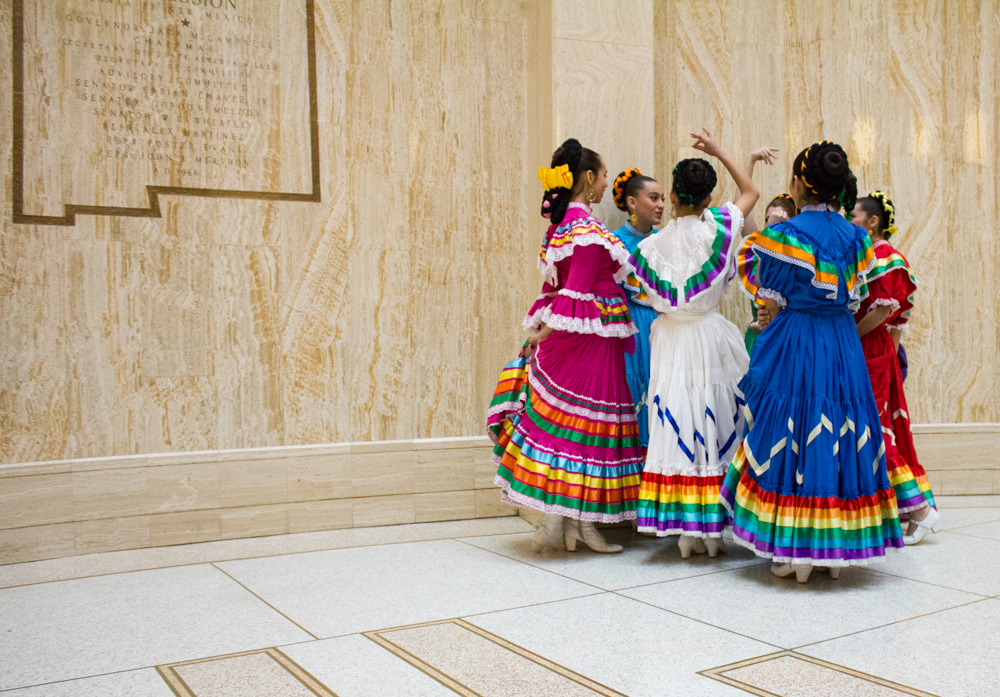


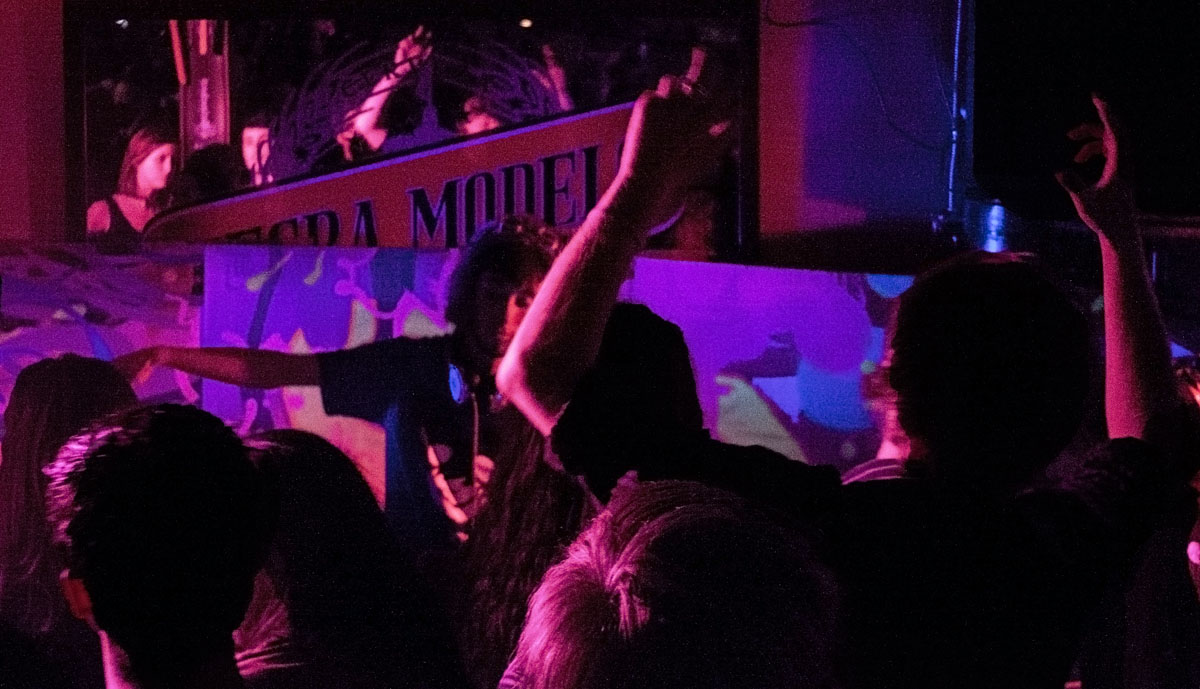
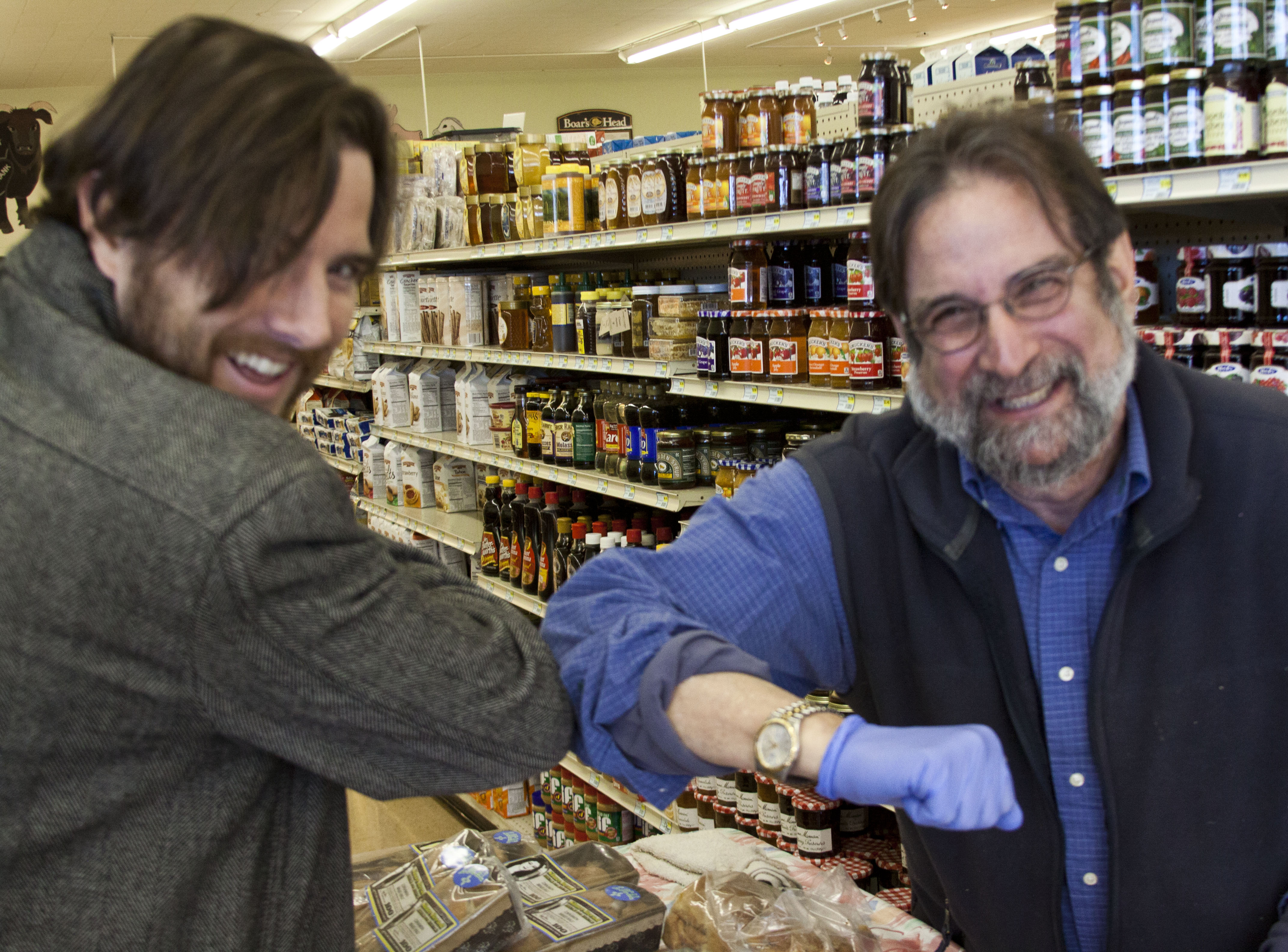

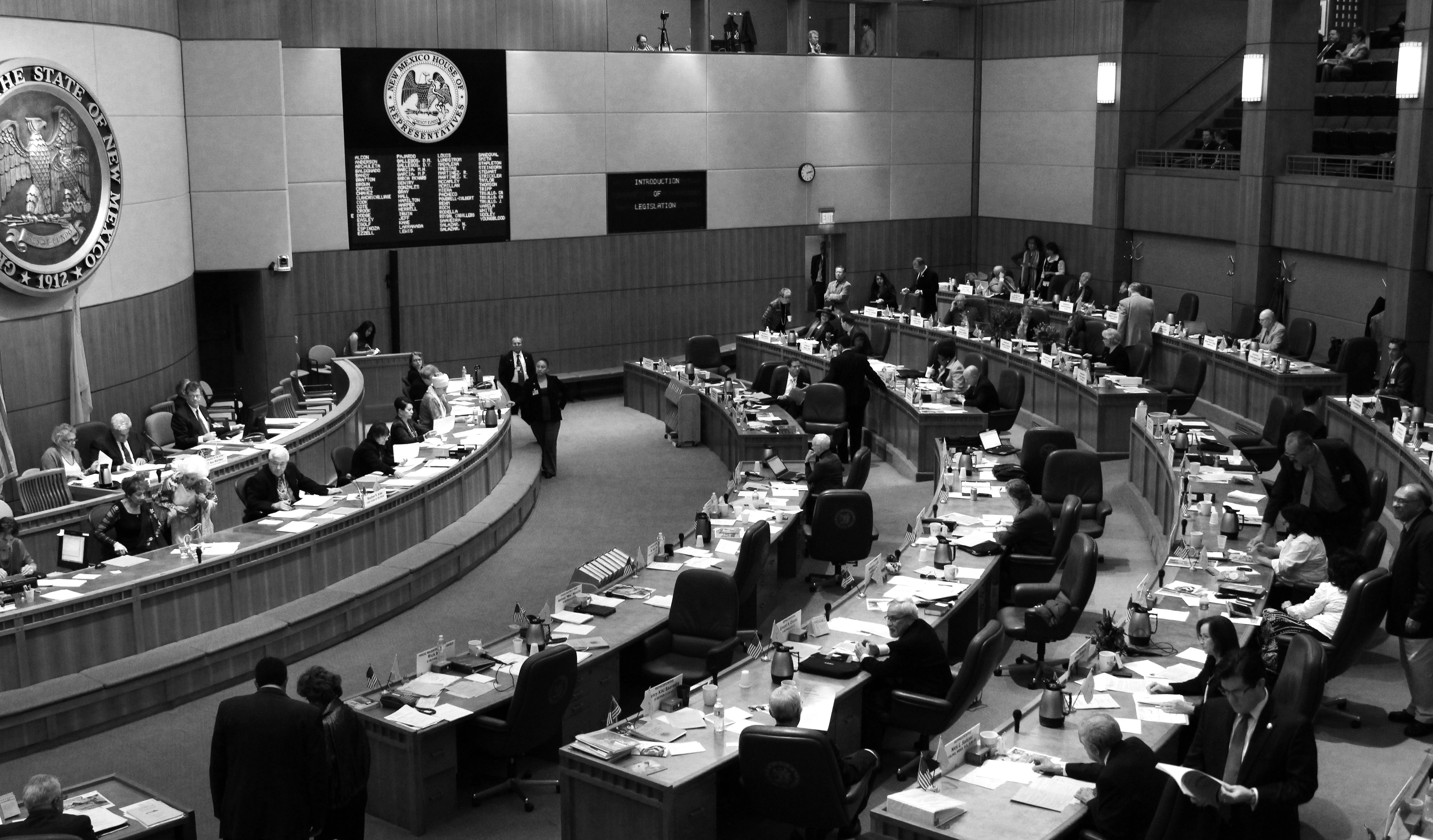

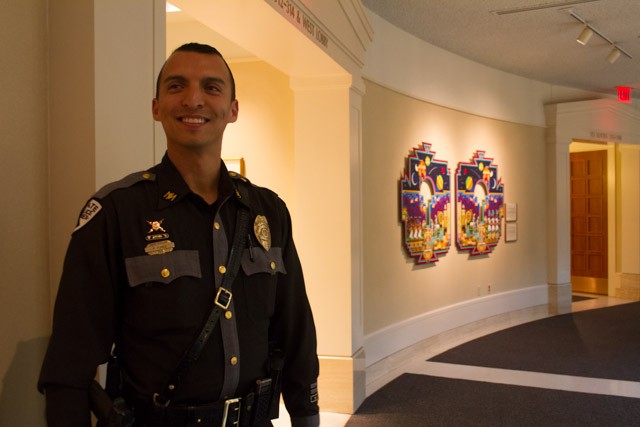
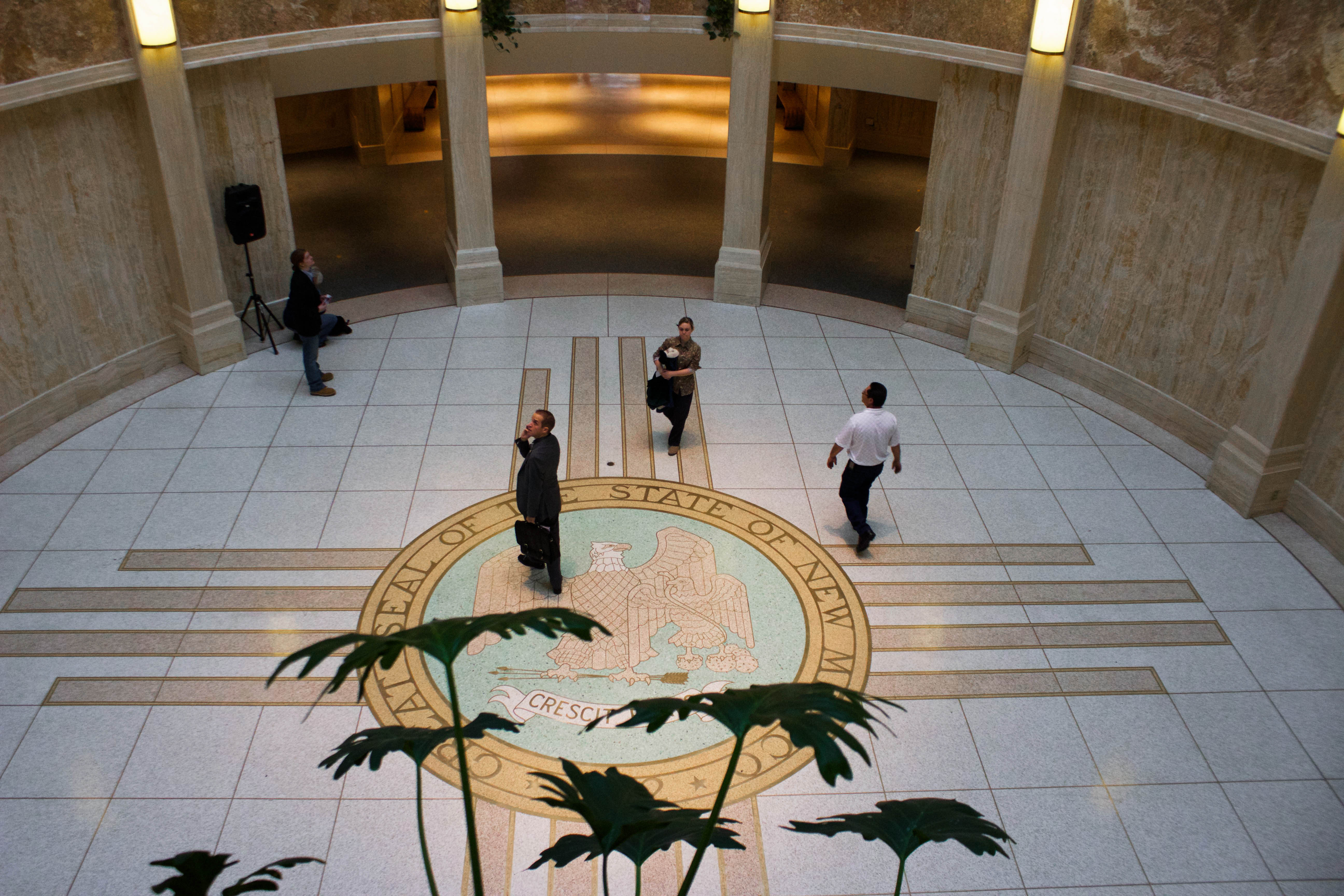
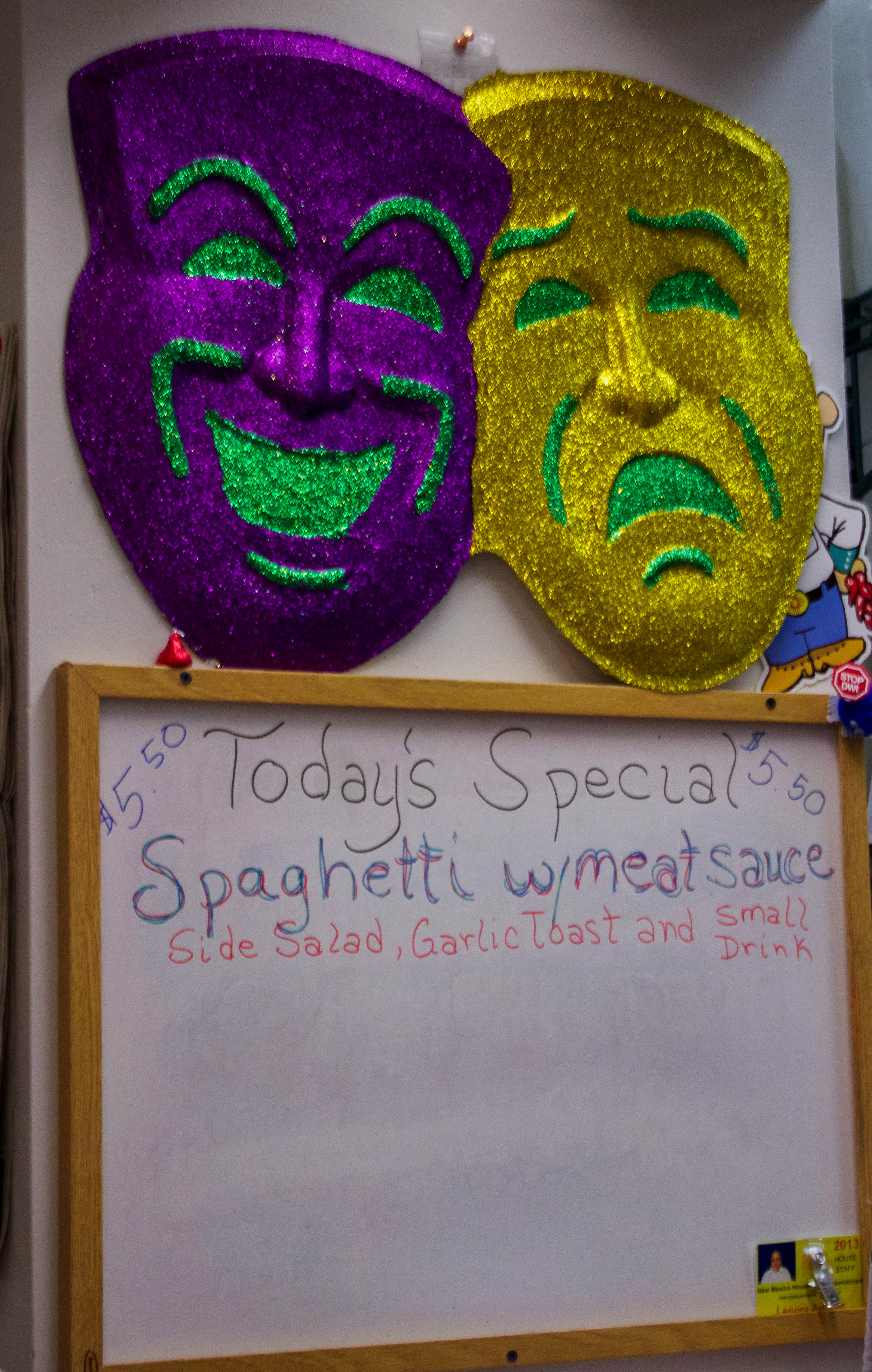
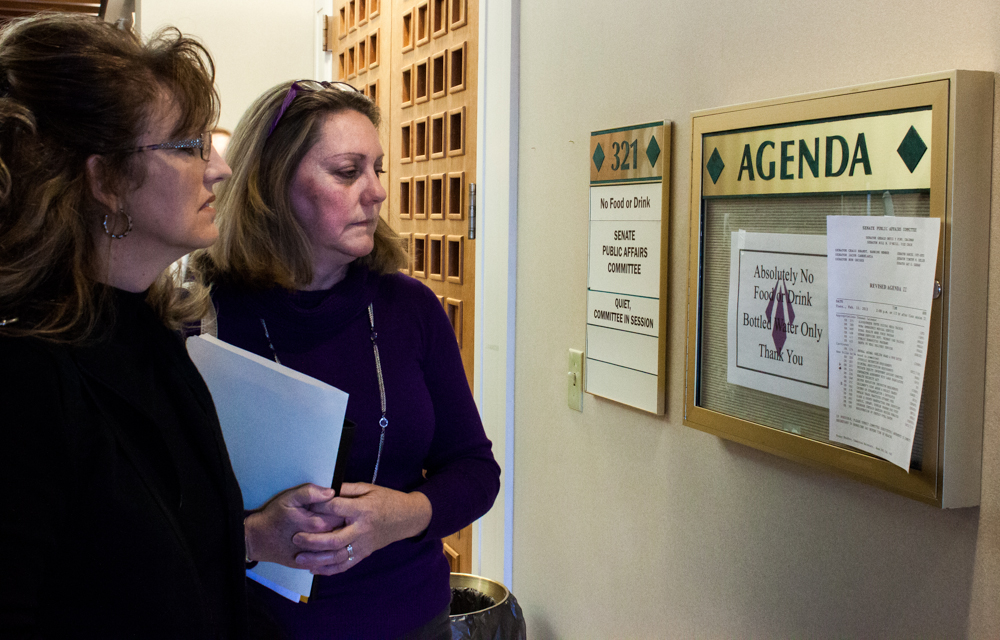

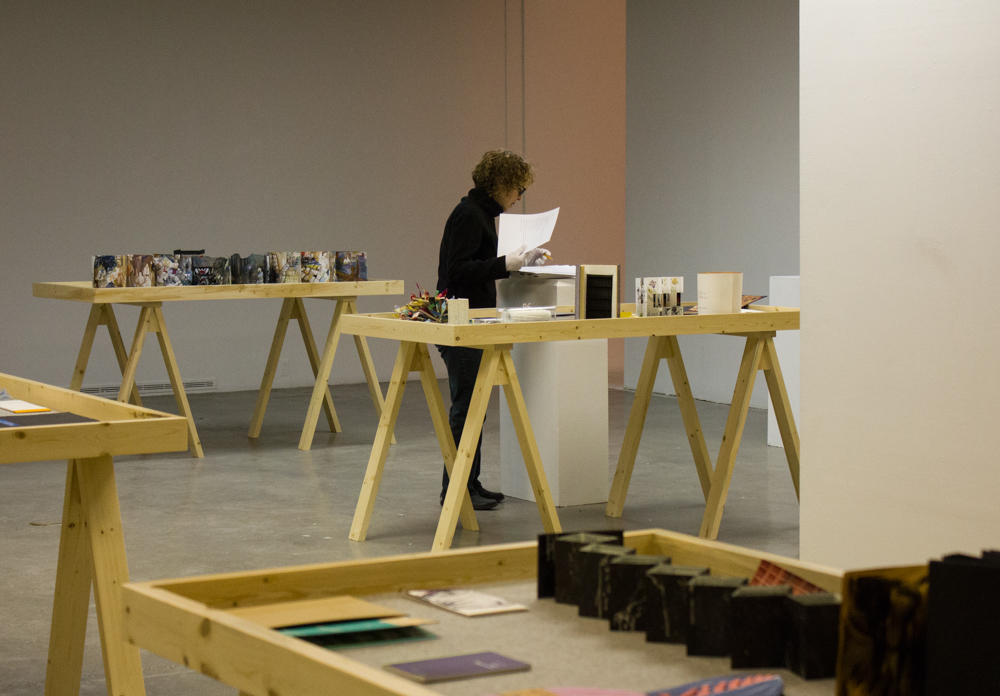
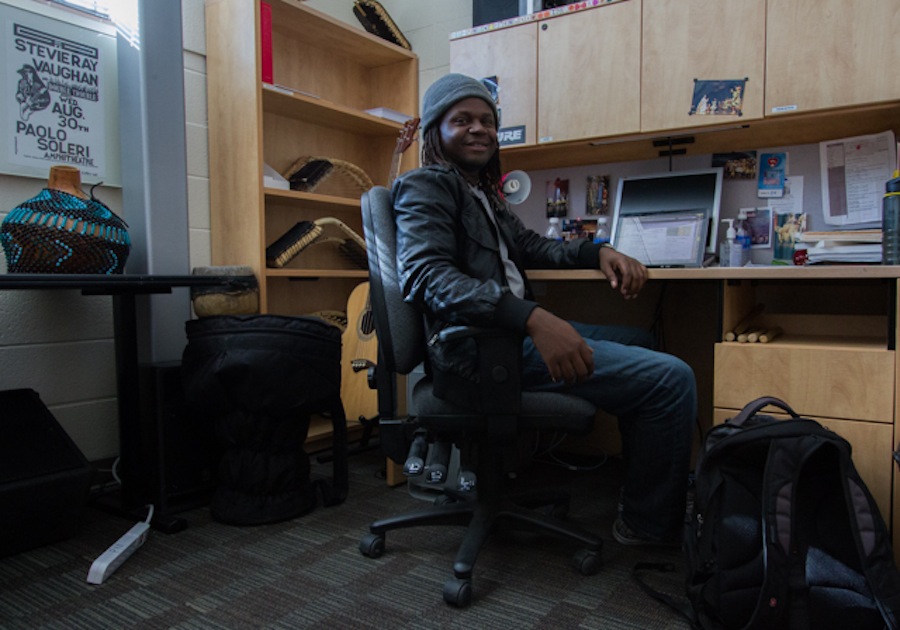
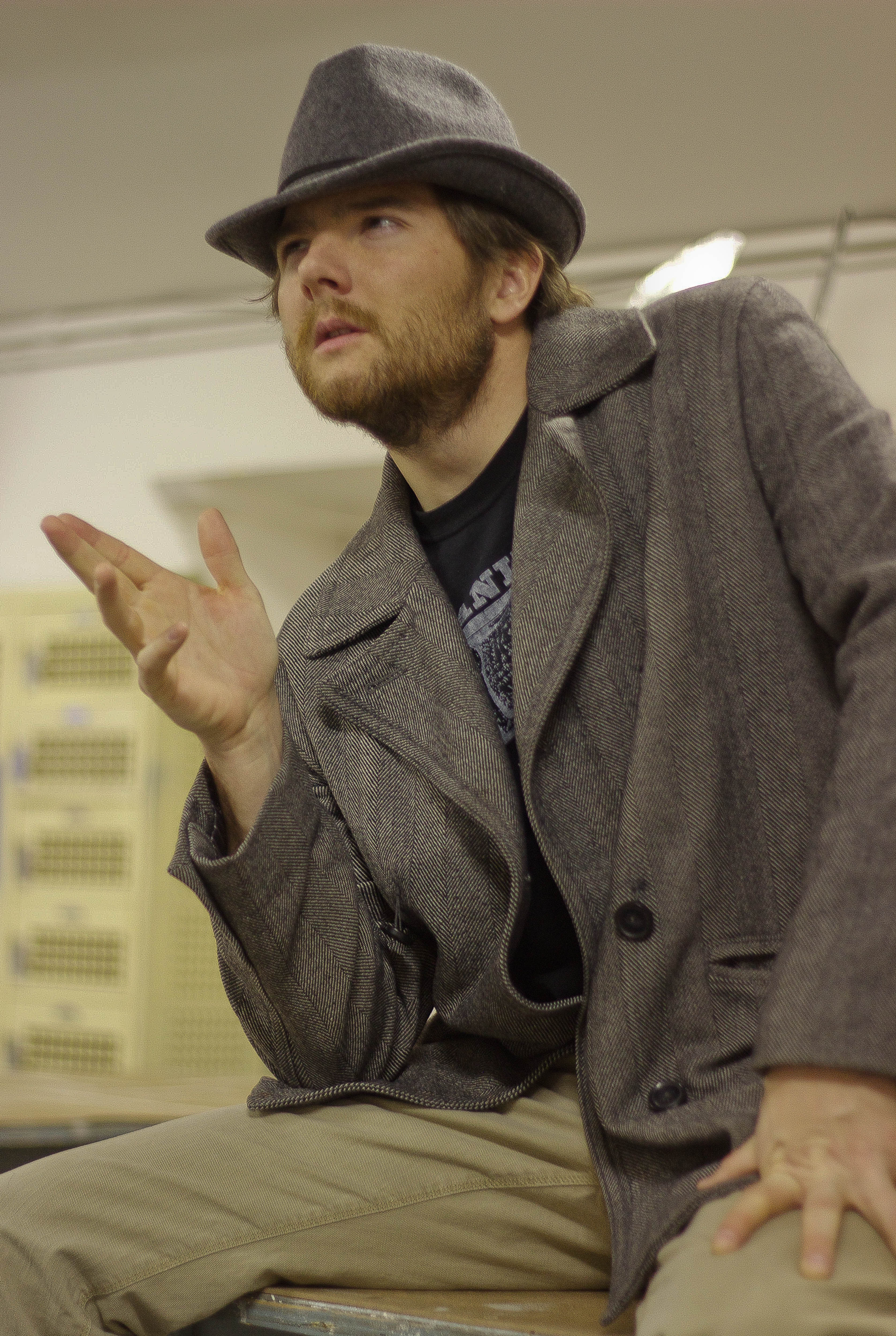


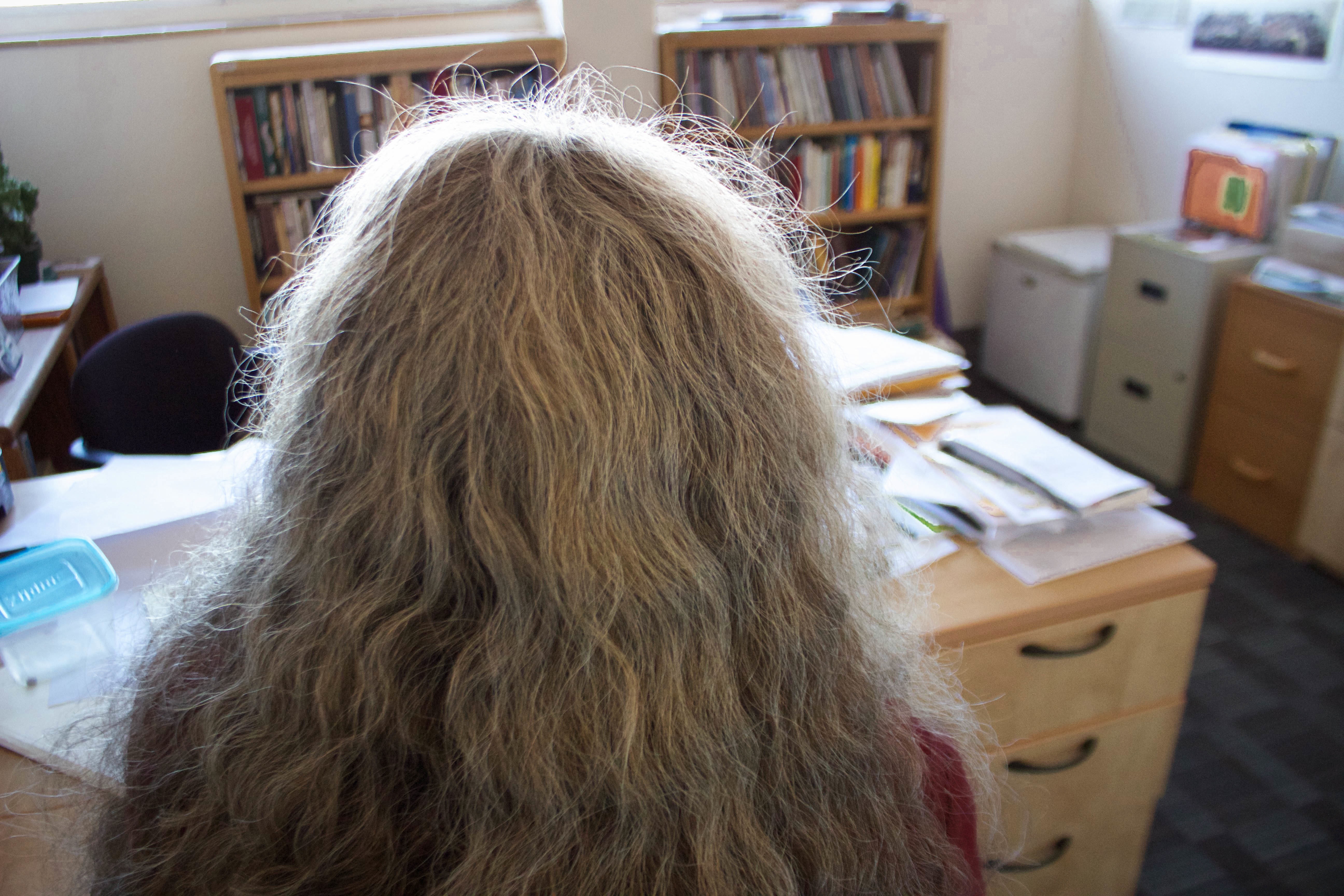
 Jackalope Magazine is the student magazine of Santa Fe University of Art and Design. Building on the interdisciplinary nature of our education, we aim to showcase the talent of our university and character of our city.
Jackalope Magazine is the student magazine of Santa Fe University of Art and Design. Building on the interdisciplinary nature of our education, we aim to showcase the talent of our university and character of our city.
Recent Comments